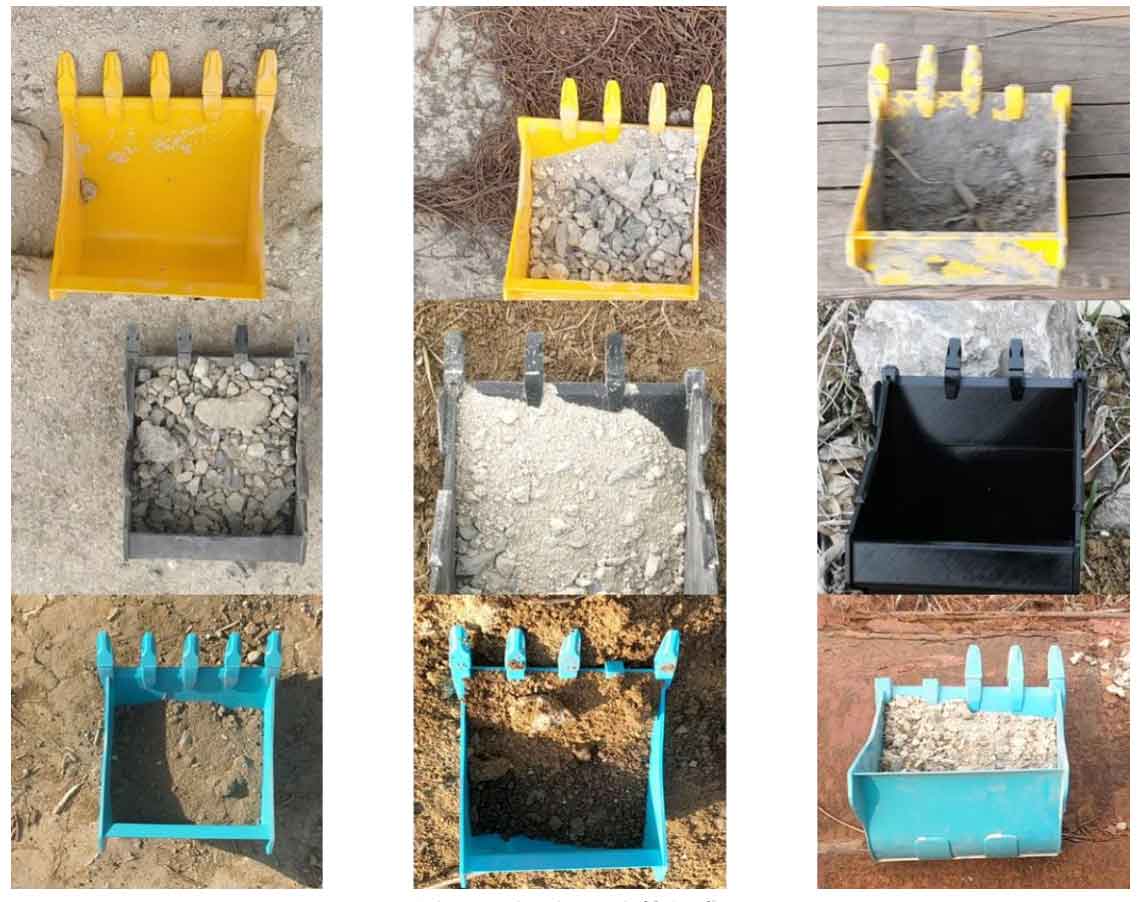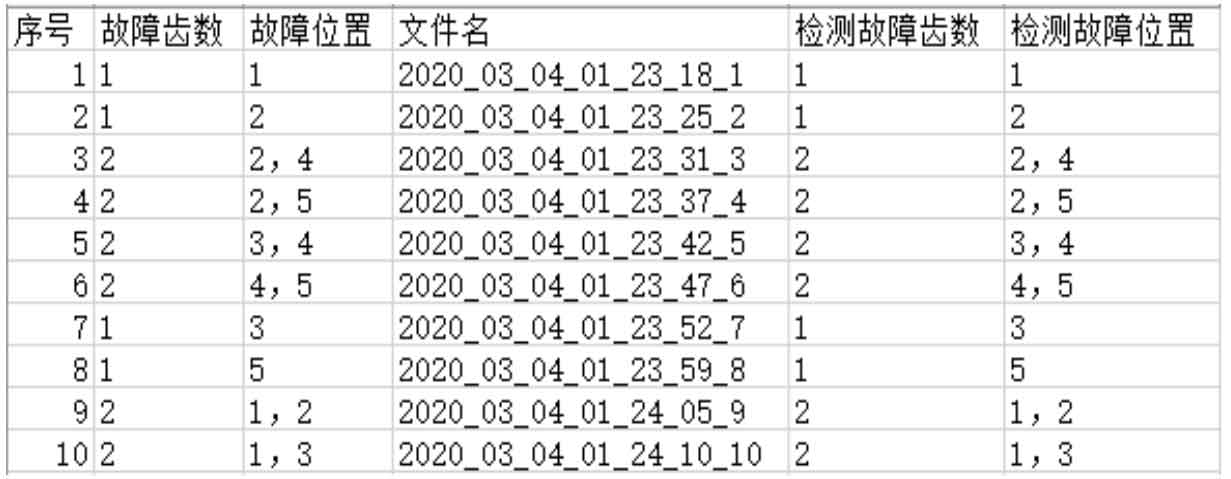Three model buckets are used to test to verify the feasibility of the designed system. The normal bucket taken from the front is selected as the template image. The image to be detected is also taken from the front, but the background and pollution degree are different, and a certain pitch angle transformation is allowed. Some data are shown in Figure 1. The image to be detected includes the normal, the fault of one tooth and the fault of two bucket teeth, and the fault tooth positions are different, and each fault tooth position is different. One of the three template images is collected, and 300 bucket images are to be detected, including 100 normal buckets, 100 buckets with one bucket tooth in failure and 100 buckets with two bucket teeth in failure.
In this experiment, the results will be recorded in the worksheet file during each test, as shown in Figure 2, and the results will be counted, as shown in the table.
According to the flow of the system, the preliminary judgment is to use the target detection program to compare the number of bucket teeth in the image to be detected with the set value. For the images used in the experiment, because they are taken from the front, there is no overlap between bucket teeth, so the detection effect is good.
In the subsequent fault detection, the judgment of some fault conditions depends on the performance of image segmentation. At the same time, it can be seen from the results in the table that the number of false judgment test images of broken 1 tooth is less than that of broken 2 teeth.
| Project | Number of detected pictures | Correct number of preliminary tests | Accuracy | Number of faulty bucket teeth to be calibrated | Number of failed bucket teeth calibrated correctly | Accuracy |
| Normal | 300 | 300 | 100% | 0 | — | — |
| Break 1 tooth | 300 | 300 | 100% | 300 | 286 | 95.3% |
| Break 2 tooth | 300 | 300 | 100% | 600 | 536 | 89.3% |
From the algorithm description of fault bucket tooth location designed, it can be seen that the analysis logic of fault location of broken two teeth is obviously complex, and it is related to the case of broken one tooth. Some fault conditions of broken one tooth can be directly judged through the spacing relationship between bucket teeth, while the fault conditions of broken two bucket teeth need to determine whether there are bucket teeth at the end, that is, the difference of contour features between bucket teeth should be calculated first, and the extraction of bucket tooth contour, Depending on the performance of image segmentation, it is easy to make mistakes when the bucket teeth have large distortion due to shooting, or the segmentation results of bucket teeth are not fine enough.
Through the result analysis. The test images of fault detection errors mainly focus on the broken teeth at both ends. There are two main reasons. The first point is that the acquisition angle of the selected detected image is quite different from the template image, resulting in large affine distortion of the detected bucket teeth relative to the template. Therefore, it is impossible to distinguish the bucket teeth at the end of the bucket from the middle bucket teeth.
The second is that the segmentation result of the image segmentation program is not fine enough, which leads to the distance between the extracted contour features and the bucket tooth features of the template image is too large, resulting in the error of fault detection.
In conclusion, according to the test experiment, the target detection program has a good detection effect on the experimental bucket and can accurately identify the position of bucket teeth. The performance of image segmentation and the pose of the bucket have a great impact on the detection effect of the fault detection program.
When the pose difference between the template bucket and the fault bucket is large, it will lead to affine distortion of the bucket teeth. Using the standard Fourier descriptor as the contour feature (with rotation, scaling and displacement invariance), its invariance is limited and does not have affine invariance. Considering that in the actual shooting scene, the camera is fixed, and the detection occurs at a fixed time, and the distortion of bucket teeth is small, so the method has a certain reference.


